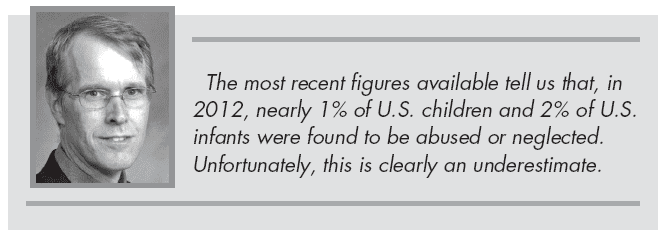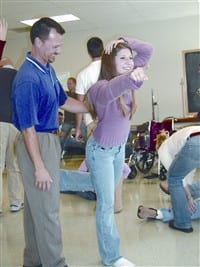The Numbers Tell the Story – Child Abuse Has Long-term Effects on Health and Happiness
It is pretty easy to get people to agree that child abuse, whether physical or sexual, is bad for children. It may not be as apparent, but experience shows that the neglect of children is often just as bad for their health, happiness, and long-term success. It is sometimes difficult to get people to agree on how big a problem this is in their communities, and for our nation as a whole.

Every year the federal government releases statistics collected from state Child Protective Services around the country. The most recent figures available tell us that, in 2012, nearly 1{06cf2b9696b159f874511d23dbc893eb1ac83014175ed30550cfff22781411e5} of U.S. children and 2{06cf2b9696b159f874511d23dbc893eb1ac83014175ed30550cfff22781411e5} of U.S. infants were found to be abused or neglected. Unfortunately, this is clearly an underestimate. Another government study, one that does not rely on state agencies, found that twice as many children were harmed, and nearly five times as many children were endangered, by child abuse and neglect. This adds up to a staggering 4 million children each year.
While these government reports both show an encouraging downward trend in child abuse, the decrease has been questioned by researchers, who point to data showing that both child-abuse fatalities and serious abuse requiring hospital admission continue to increase. Government statistics have never been able to explain polling data showing that more than one in four girls and one in 20 boys are sexually abused or assaulted before the age of 18. In truth, most abused and neglected children are never recognized, never protected, and never treated.
For the past few years, much attention has been placed on what we call ‘toxic stress’ and research called the Adverse Child Events Study (ACES). ACES has shown that childhood abuse causes serious problems that last long into adulthood. Most of us wouldn’t be surprised that mental conditions such as depression and anxiety are higher in such adults. But ACES also found that obesity, heart disease, lung disease, liver disease, and many other chronic health conditions are higher among this group, too. Adults who were abused may have undergone changes in their hormonal and immunological systems. Even the genes of a victim can be changed, and these changes can be passed on to their children.
There is very good reason to believe that trauma in childhood is the number-one public-health problem of our time. The financial cost of one year’s cases of child abuse has been estimated at $124 billion — equal to nearly 20{06cf2b9696b159f874511d23dbc893eb1ac83014175ed30550cfff22781411e5} of last year’s federal deficit.
So, perhaps an article such as this can convince you that abuse is common, bad for children, and continues to have negative effects when these abused children grow up to be adults. But how should you behave differently after you put this article down?
I would suggest several changes. If you grew up with child abuse, you should let your medical provider know. Dealing with this may be important to managing your health problems. If you are a clinician caring for adults with chronic health complaints, take the time to read the ACES papers, ask the ACES questions, and provide care for these unseen injuries. If you are facing a child who may have been abused, whether that child is asking you for help, you are a juror at a trial, or you are a clinician trying to understand a child’s injuries, keep in mind that abuse is common and can occur anywhere. Your willingness to believe may be critical to that child’s safety.
And, from now on, if you are asked to support a program — either financially or in some capacity as a volunteer — that can help to prevent or treat child abuse, think of the suffering those 4 million children endure, and the $124 billion needed every year to treat children and families. v
Dr. Stephen Boos is medical director of the Family Advocacy Center at Baystate Children’s Hospital.



Comments are closed.